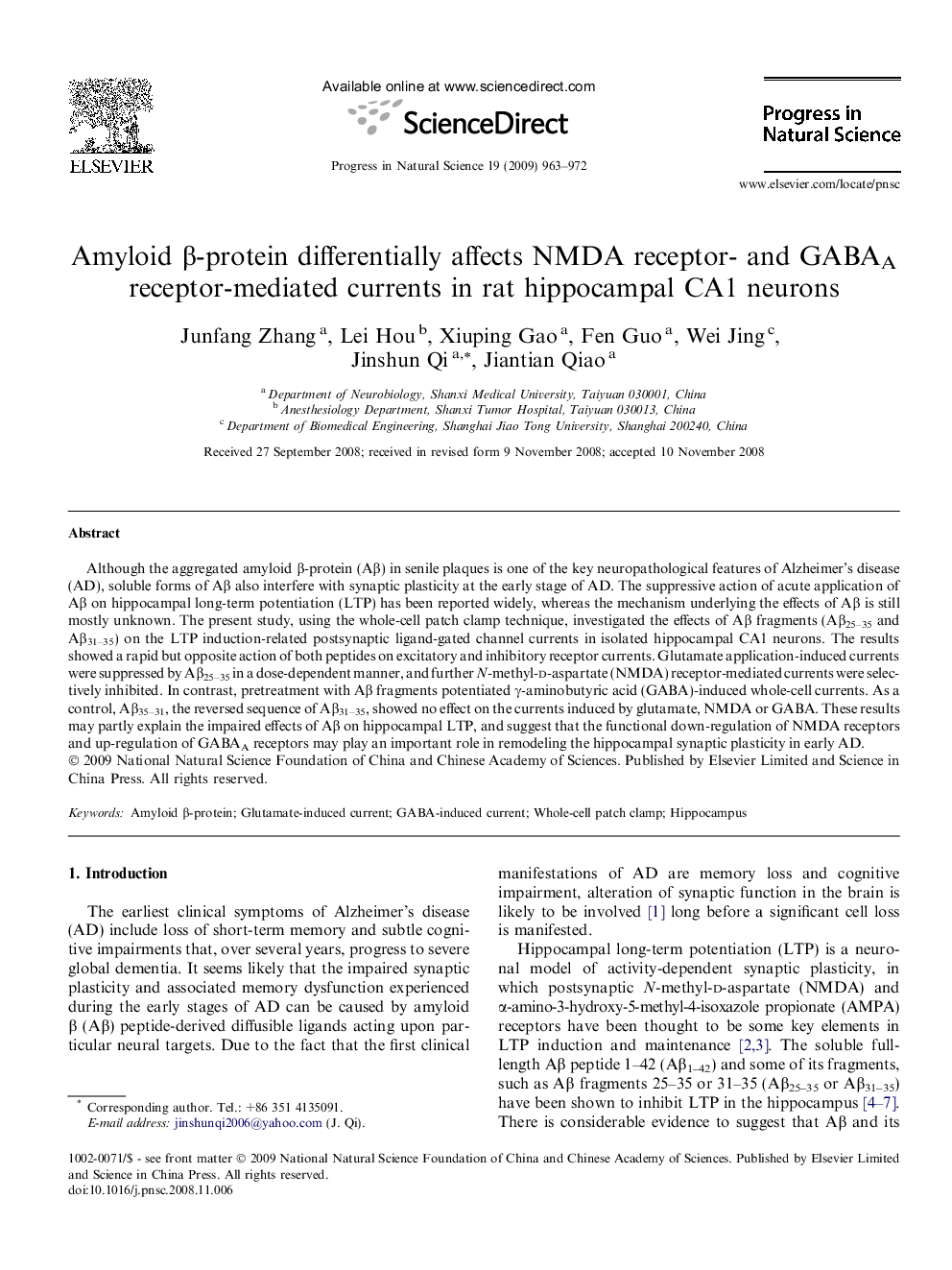| Article ID | Journal | Published Year | Pages | File Type |
|---|---|---|---|---|
| 1548495 | Progress in Natural Science: Materials International | 2009 | 10 Pages |
Although the aggregated amyloid β-protein (Aβ) in senile plaques is one of the key neuropathological features of Alzheimer’s disease (AD), soluble forms of Aβ also interfere with synaptic plasticity at the early stage of AD. The suppressive action of acute application of Aβ on hippocampal long-term potentiation (LTP) has been reported widely, whereas the mechanism underlying the effects of Aβ is still mostly unknown. The present study, using the whole-cell patch clamp technique, investigated the effects of Aβ fragments (Aβ25–35 and Aβ31–35) on the LTP induction-related postsynaptic ligand-gated channel currents in isolated hippocampal CA1 neurons. The results showed a rapid but opposite action of both peptides on excitatory and inhibitory receptor currents. Glutamate application-induced currents were suppressed by Aβ25–35 in a dose-dependent manner, and further N-methyl-d-aspartate (NMDA) receptor-mediated currents were selectively inhibited. In contrast, pretreatment with Aβ fragments potentiated γ-aminobutyric acid (GABA)-induced whole-cell currents. As a control, Aβ35–31, the reversed sequence of Aβ31–35, showed no effect on the currents induced by glutamate, NMDA or GABA. These results may partly explain the impaired effects of Aβ on hippocampal LTP, and suggest that the functional down-regulation of NMDA receptors and up-regulation of GABAA receptors may play an important role in remodeling the hippocampal synaptic plasticity in early AD.
